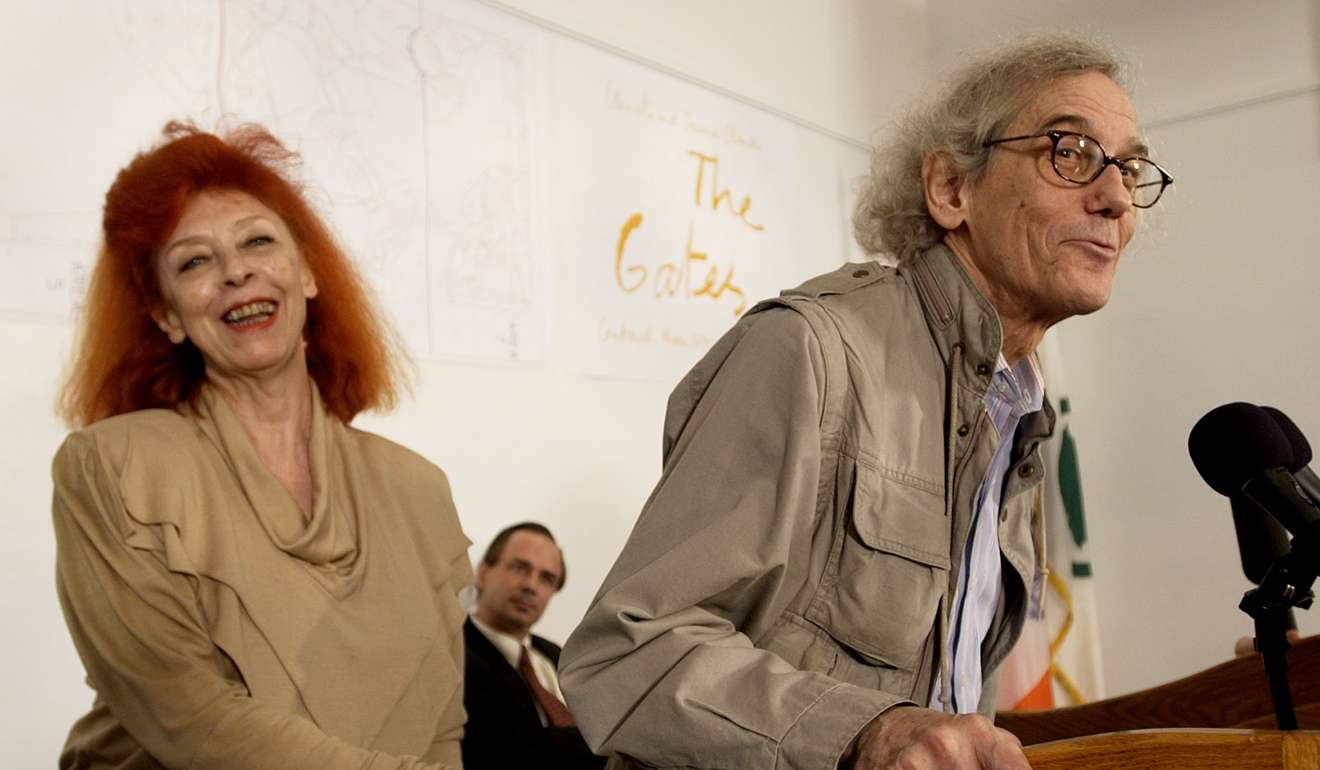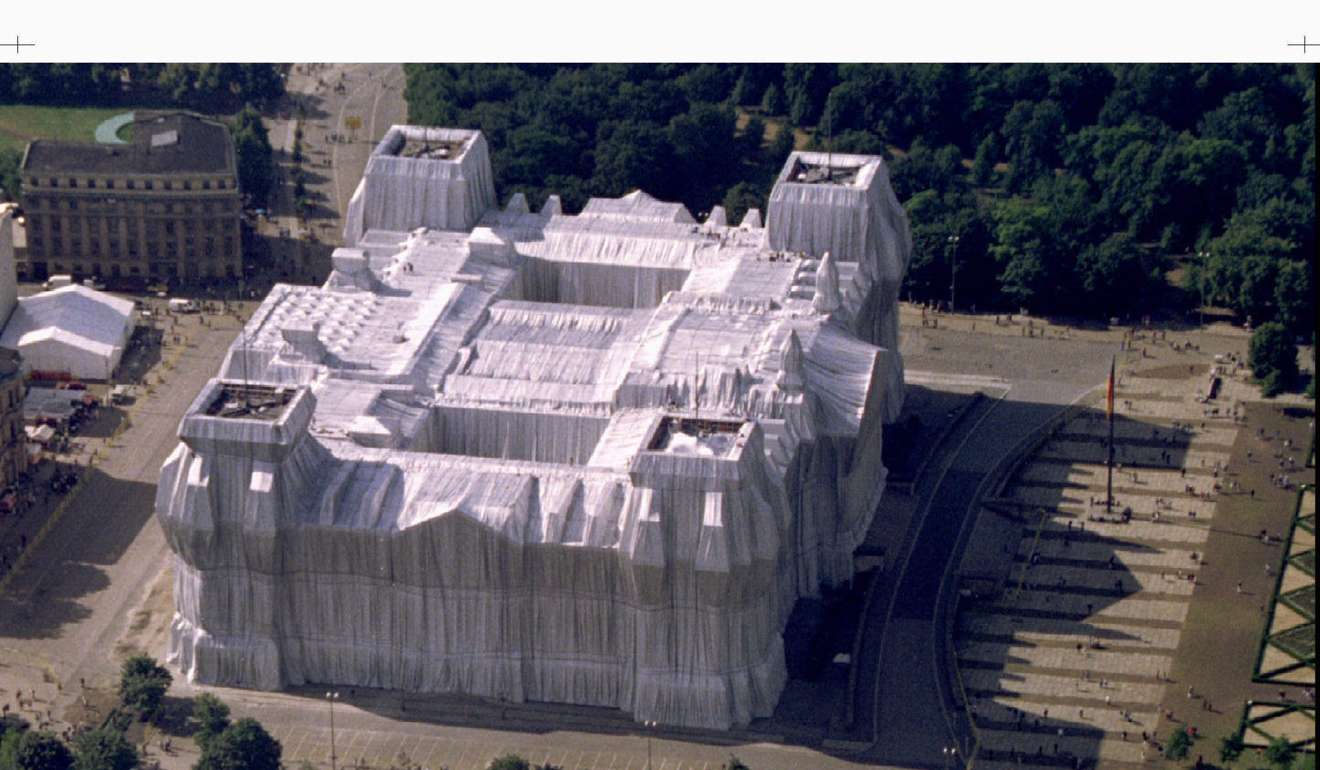
The artist Christo, in Hong Kong for Art Basel, talks Trump, the point of his art, and his plan for world’s biggest sculpture
Bulgarian-born Christo, once a refugee, says he scrapped long-planned US project because of ‘that man’, and tells of his hope he can sell art in Hong Kong to fund 150-metre-high sculpture in UAE he planned with his late wife

The artist Christo first visited Hong Kong 48 years ago when he and his late wife, Jeanne-Claude, were on their way to Australia for the first of their monumental landscape wrapping projects. He didn’t have a particularly good time.
“I was afraid in Hong Kong. There was talk of Britain handing Hong Kong back to China already and back then, I was stateless, a refugee and deserter from Bulgaria when it was part of the Soviet bloc. I thought the Chinese Communist Party might stop me and send me back there,” the 81-year-old, back in Hong Kong again for Art Basel week, remembers.

A similar fear lay behind his abrupt announcement in January that he would no longer continue with a plan to suspend fabric panels over six miles of a river in the US state of Colorado. “Over the River” would have been his biggest project in the US and has cost him millions of US dollars, a quarter of a century in planning and numerous court cases. A final legal decision was in sight, but the New York-based artist said he wouldn’t produce an artwork on federal land with Donald Trump as America’s president.
The cloth isn’t the artwork. The whole thing is the artwork
“I will not do anything that brings benefit to land owned by the federal government as long as that man is president. I won’t say his name,” he says vehemently.
That same week in January, Trump signed his first executive order to ban immigrants from seven largely Muslim countries and to temporarily turn away all refugees.

Christo, born Christo Vladimirov Javacheff, and his wife and long-time collaborator made some of the most memorable outdoor art in the world. In 1969, they wrapped approximately 1.5 miles of the coastline in Little Bay, near Sydney, with 1 million square feet of synthetic fabric. They would go on to temporarily transform 11 islands in Biscayne Bay, the Pont Neuf in Paris, the Reichstag in Berlin and Central Park, New York, with cloth. Last year, 1.2 million people visited Christo’s Floating Piers in Lake Iseo, Italy: 3km of bright orange fabric supported by floating polyethylene cubes that gave the impression you were walking on water.

The fabric emphasises the shapes of the objects it covers or surrounds and enhances the natural settings in which it is placed, he explains. “The cloth isn’t the artwork. The whole thing is the artwork.”
He says his projects – which include large, permanent sculptures – are always expensive, and involve patience and hiring a lot of people. Local residents and officials can take decades to be persuaded, or to defeat in court. But he and his wife always insisted on paying for everything themselves.
That was why he could just walk away from the Colorado project. “It is an urge to be free that always drives me as an artist. We never looked for sponsors. We made money by selling artwork. If we needed continuous cash flow, we applied for bank loans using our artwork as collateral,” he says.

This week in Hong Kong, he has brought over drawings, what he calls “wrapped objects” and other artwork dating back to the 1960s to sell at Galerie Gmurzynska’s Kabinett section at Art Basel.
The money will hopefully be used towards his next big project: a massive permanent sculpture called The Mastaba.
A mastaba was a flat-topped burial mount made of mud bricks in ancient Mesopotamia. Christo’s version – if he ever gets approval from the United Arab Emirates – will be made of hundreds of thousands of multi-coloured barrels and the largest sculpture in the world, at 150 metres high.
“Jean-Claude and I came up with the idea in the 1970s. I hope I will get to complete it before I die,” he says.